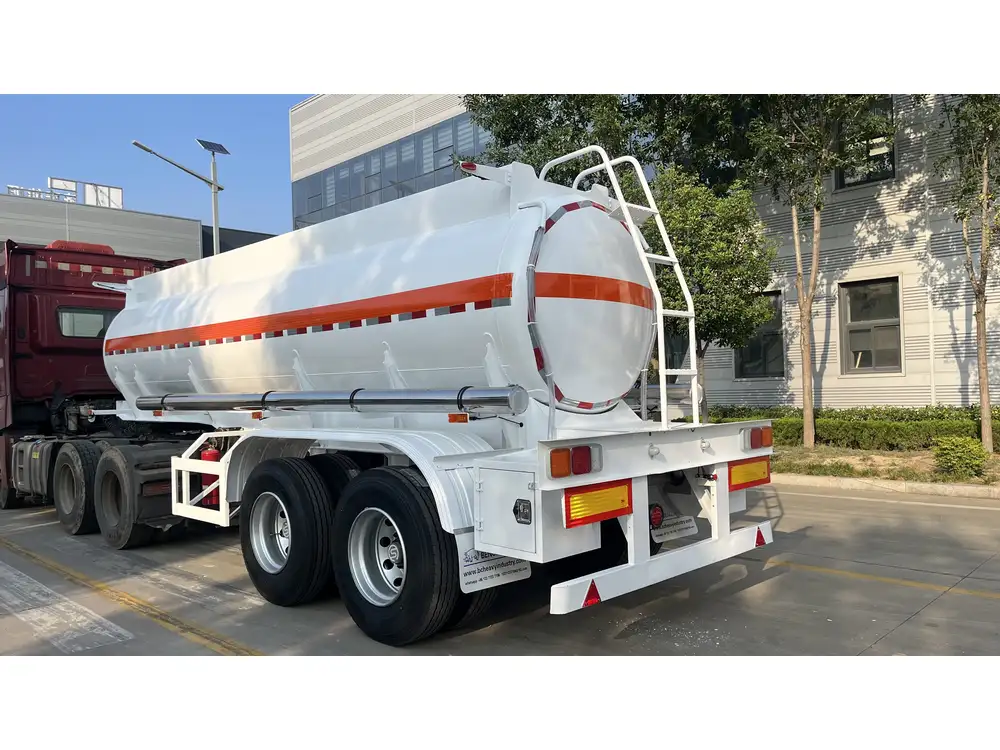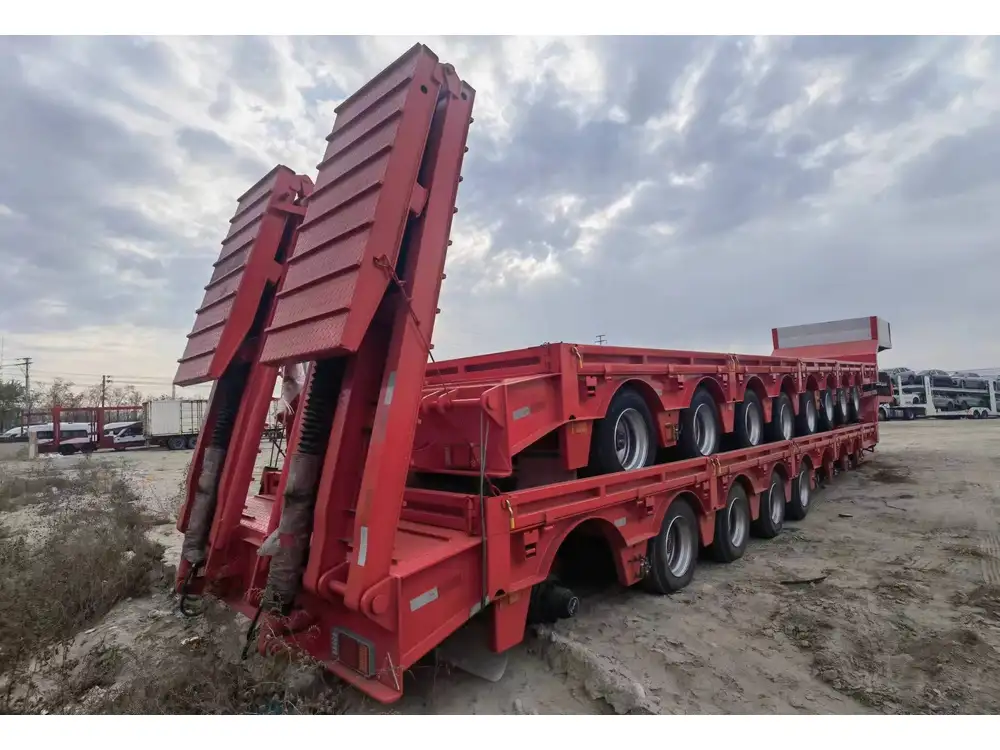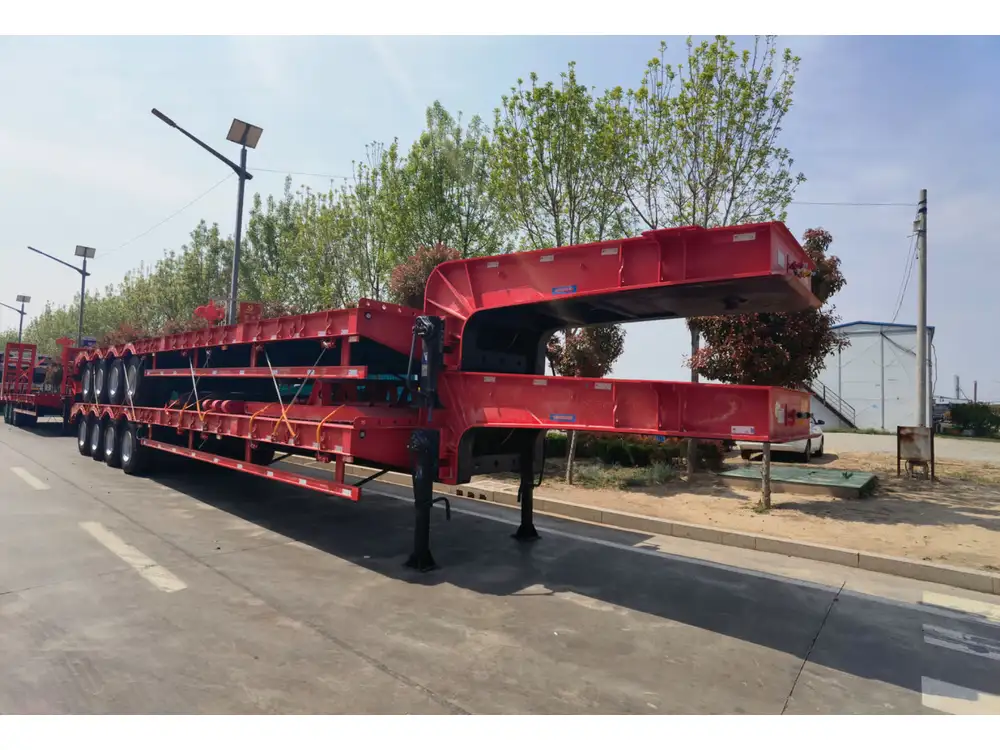When it comes to transporting goods safely and efficiently, understanding the dimensions and regulations surrounding semi-trailers is crucial. One of the most pressing questions in logistics and transportation is: What is the maximum width of a trailer? In this article, we explore this question comprehensively, amidst various regulatory standards, various types of trailers, and best practices for maximizing efficiency on the road.
Understanding Trailer Width Regulations
Trailer width regulations vary significantly by region and are influenced by a combination of safety guidelines and state-specific laws. These regulations are all designed to ensure the safe transportation of goods while minimizing the risks associated with larger vehicles on public roads. Below, we break down the essential points regarding width regulations.
Federal Standards in the United States
According to the Federal Highway Administration (FHWA), the maximum width allowed for a semi-trailer is 8.5 feet (102 inches). This standard is uniform across all states in the U.S. However, there are exceptions and notable points:
Special Permits: Some states allow wider trailers under specific conditions with the appropriate permits, which can be up to 12 feet wide for specialized transportation, like oversized loads.
State Variations: Each state can establish its own regulations that may differ slightly from federal mandates. For example, California may have particular restrictions during certain times of the year, affecting width allowances due to weather conditions.

Global Standards
When considering operations internationally, it’s vital to recognize that each country has its own regulations:
| Country | Maximum Trailer Width |
|---|---|
| United States | 8.5 ft (102 inches) |
| Canada | 8.5 ft (102 inches) |
| Australia | 8.2 ft (2.5 meters) |
| European Union | 2.55 meters (8.37 ft) |
Understanding these differences is critical for manufacturers and logistics companies involved in cross-border transportation.
Different Types of Trailers and Their Widths
Trailer width plays a crucial role in the efficiency of cargo transport. Different types of trailers have different standard widths, which serve specific industries and cargo requirements. Let’s explore some common types of trailers and their maximum widths.
Flatbed Trailers
- Standard Width: 8.5 ft (102 inches)
Flatbed trailers are utilized for transporting heavy and irregularly shaped items. Its open design allows for large cargo, but it has weight limits and requires appropriate loading practices.

Enclosed Trailers
- Standard Width: 8.5 ft (102 inches)
These trailers provide better protection for cargo, making them ideal for sensitive goods. They are commonly used for automotive shipping or transporting fragile items.
Refrigerated Trailers
- Standard Width: 8.5 ft (102 inches)
Reefer trailers are essential in the transportation of perishable goods. The width remains standard, but the internal cooling mechanisms add weight and may affect load capacities.
Specialized Trailers
For specific needs, such as transporting construction equipment or agricultural products, specialized trailers can exceed standard widths under permitted conditions. For example:
- Lowboy Trailers can go above 8.5 feet with proper permits but are typically used for oversized loads.
- Step Deck Trailers may also operate outside the width restrictions when transporting heavy machinery.

Importance of Adhering to Width Regulations
Adhering to trailer width regulations is not just a matter of legality; it significantly impacts various operational aspects. Below are some critical considerations:
Safety of Transport Operations
- Wider trailers can pose risks in terms of stability and maneuverability.
- Complying with the regulations reduces the likelihood of accidents caused by improper loaded trailers.
Financial Implications
- Fines and Penalties: Operating outside of width regulations leads to heavy fines, potentially crippling a company financially.
- Insurance Risks: Non-compliance may also affect insurance coverage, which can lead to costly legal implications during accidents.

Impact on Infrastructure
Wider trailers can cause more wear and tear on roads, bridges, and tunnels. Therefore, adhering to the width regulations helps maintain public infrastructure.
Best Practices for Maximizing Efficiency
To successfully navigate the regulations surrounding trailer width, consider these best practices:
Planning and Route Management
Optimize routes ahead of time to account for road restrictions concerning width. Use logistics software that provides real-time data about route limitations.

Load Configuration
Distribute weight evenly and within legal confines to maintain stability and control. Overloading in width may require special permitting, and careful planning can mitigate additional costs.
Regular Inspections
Conduct regular inspections to ensure that trailers maintain compliance with width and safety regulations over time. Inspections should include checking the suspension, alignment, and loading practices.
Common Misconceptions Regarding Trailer Width

Misconception 1: All States are the Same
Many believe that width regulations are uniform across the U.S.; however, individual states have the power to implement specific laws based on local needs.
Misconception 2: Wider Trailers are Always Better
Wider trailers may seem advantageous in carrying larger loads, but they come with increased operational risks and regulatory compliance challenges.
Misconception 3: Permits Guarantee Safe Travel
While obtaining permits for wider loads is necessary, it doesn’t guarantee safety. Proper training and adherence to best practices are crucial to ensuring safe delivery.

Conclusion: Navigate the Complexity of Trailer Width Regulations
Understanding the complexities surrounding trailer widths is essential in today’s logistics landscape. The maximum allowable width of a standard semi-trailer is 8.5 feet in the United States, but it can vary in other regions. Compliance with width regulations is paramount, not only for legal reasons but also for ensuring safe and efficient transport operations.
Key Takeaways
- Know Your Regulations: Always stay informed about both state and federal regulations related to trailer widths.
- Choose the Right Trailer: Select the appropriate trailer type for your specific needs, considering the width and other specifications.
- Plan Accordingly: Be proactive in route planning and load management to ensure compliance and efficiency.
Keeping the above considerations in mind will foster safer transportation practices and help logistics companies succeed in their operations, ensuring that goods reach their destinations promptly and intact.
The knowledge surrounding trailer dimensions is an intricate web that necessitates continuous learning and adaptation—embrace it to enhance your business’s operational efficiency.



